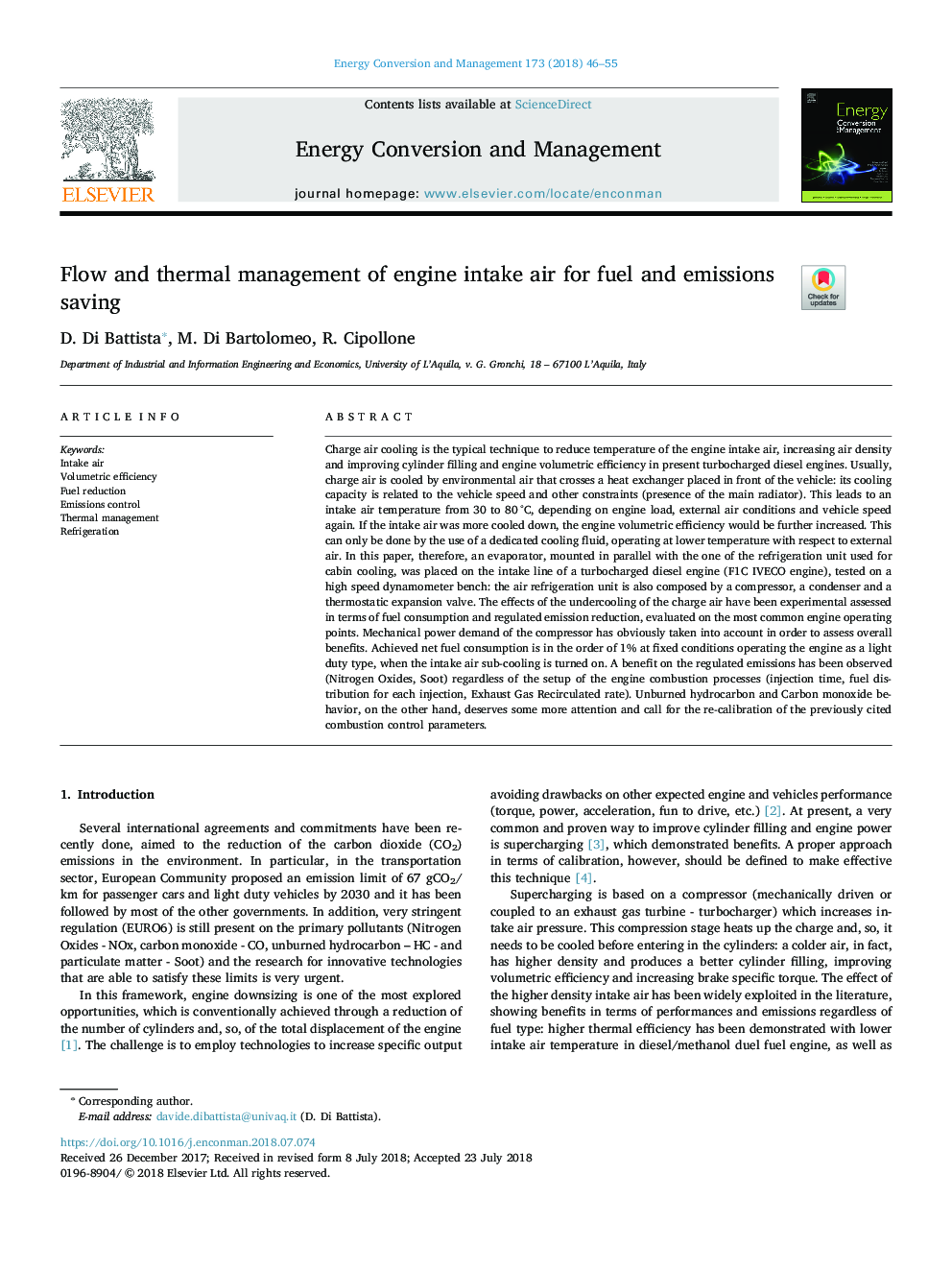| کد مقاله | کد نشریه | سال انتشار | مقاله انگلیسی | نسخه تمام متن |
|---|---|---|---|---|
| 7157762 | 1462789 | 2018 | 10 صفحه PDF | دانلود رایگان |
عنوان انگلیسی مقاله ISI
Flow and thermal management of engine intake air for fuel and emissions saving
ترجمه فارسی عنوان
جریان و مدیریت حرارتی موتور مصرف هوا برای صرفه جویی در سوخت و انتشار
دانلود مقاله + سفارش ترجمه
دانلود مقاله ISI انگلیسی
رایگان برای ایرانیان
کلمات کلیدی
هوای ورودی راندمان حجمی، کاهش سوخت، کنترل انتشار، مدیریت حرارتی، تبرید،
موضوعات مرتبط
مهندسی و علوم پایه
مهندسی انرژی
انرژی (عمومی)
چکیده انگلیسی
Charge air cooling is the typical technique to reduce temperature of the engine intake air, increasing air density and improving cylinder filling and engine volumetric efficiency in present turbocharged diesel engines. Usually, charge air is cooled by environmental air that crosses a heat exchanger placed in front of the vehicle: its cooling capacity is related to the vehicle speed and other constraints (presence of the main radiator). This leads to an intake air temperature from 30 to 80â¯Â°C, depending on engine load, external air conditions and vehicle speed again. If the intake air was more cooled down, the engine volumetric efficiency would be further increased. This can only be done by the use of a dedicated cooling fluid, operating at lower temperature with respect to external air. In this paper, therefore, an evaporator, mounted in parallel with the one of the refrigeration unit used for cabin cooling, was placed on the intake line of a turbocharged diesel engine (F1C IVECO engine), tested on a high speed dynamometer bench: the air refrigeration unit is also composed by a compressor, a condenser and a thermostatic expansion valve. The effects of the undercooling of the charge air have been experimental assessed in terms of fuel consumption and regulated emission reduction, evaluated on the most common engine operating points. Mechanical power demand of the compressor has obviously taken into account in order to assess overall benefits. Achieved net fuel consumption is in the order of 1% at fixed conditions operating the engine as a light duty type, when the intake air sub-cooling is turned on. A benefit on the regulated emissions has been observed (Nitrogen Oxides, Soot) regardless of the setup of the engine combustion processes (injection time, fuel distribution for each injection, Exhaust Gas Recirculated rate). Unburned hydrocarbon and Carbon monoxide behavior, on the other hand, deserves some more attention and call for the re-calibration of the previously cited combustion control parameters.
ناشر
Database: Elsevier - ScienceDirect (ساینس دایرکت)
Journal: Energy Conversion and Management - Volume 173, 1 October 2018, Pages 46-55
Journal: Energy Conversion and Management - Volume 173, 1 October 2018, Pages 46-55
نویسندگان
D. Di Battista, M. Di Bartolomeo, R. Cipollone,
